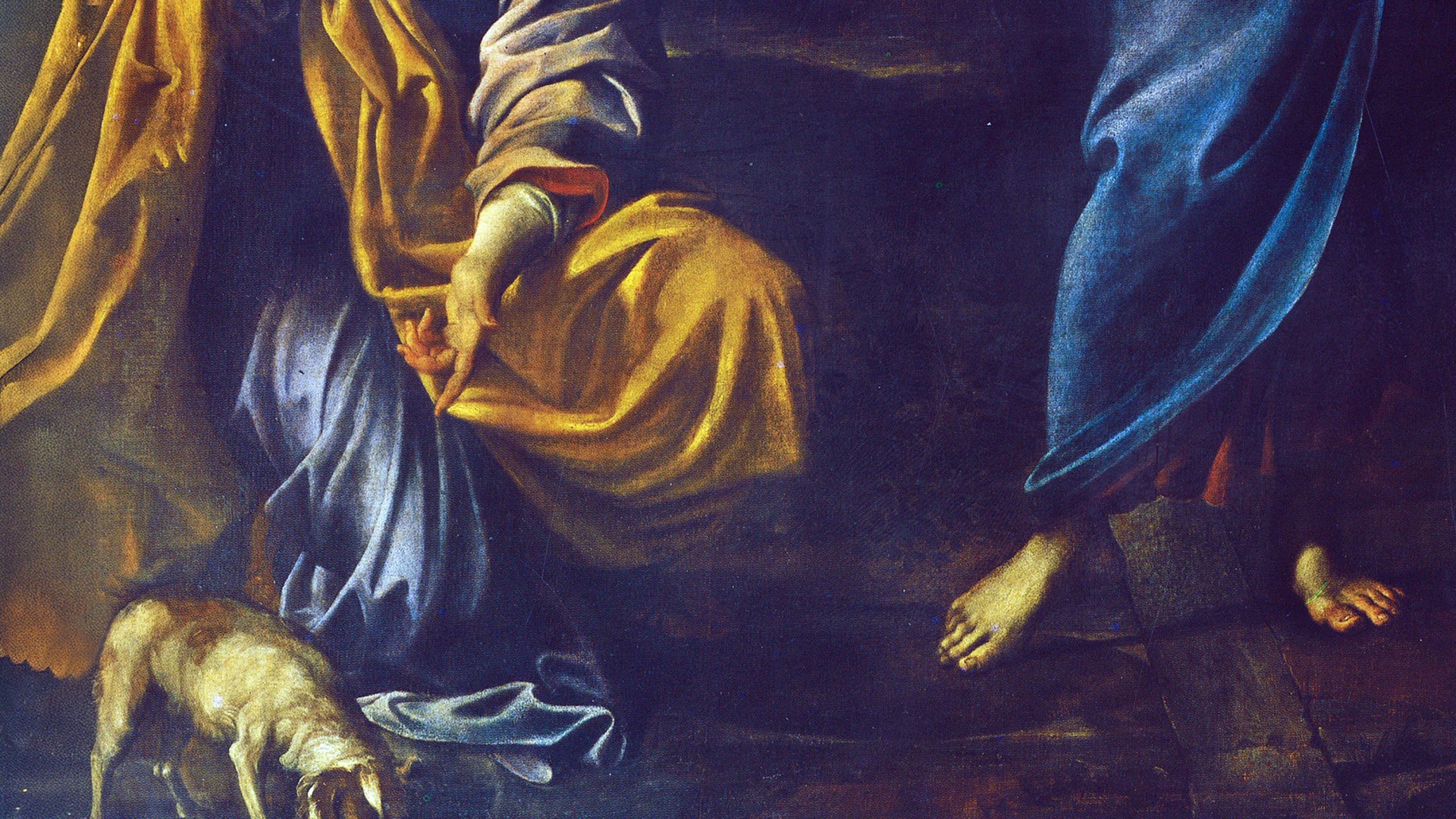Carlos Payan, a French charismatic pastor whose passion for seeing people healed drove him to unite Christians across denominations, died of a heart attack on October 12, at age 61.
Much of his ministry occurred through Paris Tout Est Possible (“Paris, Everything Is Possible”), a ministry he cofounded in 2003 with friends from Protestant, Catholic, and Messianic Jewish communities.
“During my many travels, I see the same immense desires everywhere, the same unfulfilled aspirations, particularly among young people: to be consoled, healed, and loved by Christ,” Payan stated in 2013. “France cries out its thirst for God; it is to quench this thirst that I would like to dedicate the rest of my life.”
Born in 1963 in the small town of Lons-le-Saunier in eastern France, Payan was the eighth child of Spanish Republican Communists who had fought against Franco’s regime and then fled across the border. His parents’ political convictions were sharply at odds with those of the Spanish Catholic Church, and the church’s extremely close relationship with the Franco dictatorship did not foster an environment where religion was well-regarded.
One day in 1981, Payan was selling Communist newspapers in the nearby city of Mâcon, when evangelical Christians offered him a copy of the New Testament. A few months later, he dedicated his life to Christ.
Payan would later say that he went “from the Mitterrand generation to the Jesus generation,” a reference to the socialist French president François Mitterrand, elected that same year. Despite his joy in finding Jesus, “For some of my family members, my conversion was a betrayal.”
Though Payan first began attending church at a Frères Larges (Plymouth Brethren) congregation, in 1983 he attended a meeting with the Canadian Catholic priest Emiliano Tardif, who was known for miraculous healings. The experience caused him to aspire to a similar ministry. Two years later, he married his wife, Agnès, in a Protestant church in Mâcon, with an evangelical deacon as officiant and performances by Catholic singers.
Payan’s interest in ministry led him to become an assistant pastor at Mâcon in 1991 while he also worked as a custodian, cleaning local government buildings.
Payan later shared that he encountered the Holy Spirit over a period of several weeks while employed at those two jobs.
“I thank the Lord for having given me this experience, which could have made me arrogant, at a time when my job, which consisted in polishing the toilets of my comrades, kept me humble,” he said.
While continuing pastoral ministry and advancing in a secular career that would eventually lead him to significant public-service work in the French government, Payan also became connected with the Catholic charismatic renewal, which started in the United States in 1967. In 1997, he joined the charismatic association Embrase Nos Coeurs (“Ignite Our Hearts”), which gathered Protestants and Catholics together.
In 1999, after divisions at Payan’s local church triggered a crisis at his ministry and in his faith, he visited the Taizé ecumenical French community. There he encountered Brother Roger, the founder of the community, who asked Payan to pray for him.
“I was stunned. This great spiritual leader was asking me to intercede for him!” said Payan. “I prayed for him, and I was healed. That day, I understood that the Lord wanted me to love his whole church.”
The following year, the French government transferred Payan to Paris for his work, a move that offered him even further opportunities to build relationships across the Christian spectrum. In 2003, he co-founded Paris Tout Est Possible, focusing primarily on organizing events and offering healing prayers to an ever-growing number of attendees, the vast majority (75%) of whom were Catholic.
Observing this impact, French evangelical sociologist Sébastien Fath noted that Payan had helped create “a truly transversal charismatic subculture, driven by meetings and conferences where thousands of Christians of all labels converge.”
Still, this exposure to a vast diversity of Catholics, beyond those connected to the charismatic movement with whom he had previously built relationships, challenged Payan.
“The Lord asked me to love my Catholic brothers. I replied, ‘You want me dead!’” he recalled this year while serving as a judge at La Nuit des Influenceurs Chrétiens, a competition for Christian influencers of all denominational backgrounds. “Well, yes, God wanted me to die to myself, to my complacency, to what I knew, in order to discover everything else.”
Payan was also deeply convicted by Jesus’ words to his followers that “everyone will know that you are my disciples, if you love one another” (John 13:35). As part of this journey, Payan found he had much to appreciate about the Catholic tradition. It was welcoming, offered space for diversity (especially in forms of worship), placed value on liturgy, contemplation, and silence, and had a more relaxed relationship with time, he stated in 2023.
Once in Paris, Payan attracted the attention of the renowned French newspaper Le Monde. In its profile of the “evangelical healer,” they wrote, “He jumps up and down, waves his hands and sings. Pastor Payan is an artist before he is a healer. He preaches, he mimes, he tells stories.”
Convinced that “Voltaire’s language can go hand in hand with an unabashed gospel,” he was led to build relationships with numerous healing ministries in French-speaking countries, especially in the context of the International Association of Healing Ministries (IAHM).
Payan also ministered to people outside the Francophone world. At a meeting in the United States with the IAHM, Belgian pastor Nathanaël Beumier, who served as Payan’s translator, recalled that despite his own exhaustion, Payan continued to pray tirelessly for the many people who approached him, demonstrating “compassion and love that went even beyond his physical limits.”
Even as Payan boldly affirmed the possibility of miraculous healing, he tried to remain modest about the outcomes of his prayers. “Of the people who come to see me, 5 to 10 percent are cured,” he told Le Monde. In his 2009 book dedicated to the topic, La guérison divine (“Divine Healing”), he wrote, “We are not God and we do not know his will. Let us pray, let us intercede, let us beg … but let us promise nothing to those who suffer lest we add a heavy disappointment to their suffering.”
In 2017, Payan retired from his job in the French public service to devote himself fully to his ministry. That same year, during a Pentecost celebration for the 50th anniversary of the Catholic charismatic renewal, he was one of 120 charismatic leaders unexpectedly invited by Pope Francis to join him on stage in front of the 50,000 Catholic pilgrims gathered for the event.
“I couldn’t believe it. I hadn’t even had time to grab my jacket. The Pope just wanted us to be there, and of course, we said yes,” he explained.
Payan’s open embrace of Catholics created some distance between him and evangelicals (charismatic or not) who couldn’t follow him that far on ecumenism. His strong emphasis on physical healing, meanwhile, prompted criticisms from both Catholic and more traditional evangelical quarters.
“He paid a high price for his desire for unity, from both sides,” said Grégory Turpin, associate founder of Première Partie, Payan’s publisher, commenting on some of the polemics that arose along the way.
Though he built many connections between charismatic Catholics and charismatic evangelicals, Payan remained quite estranged from many non-charismatic evangelicals. Yet Romain Choisnet, head of communication for the National Council of French Evangelicals, remembered him as someone who “has meant a great deal to many people, churches, and movements in the evangelical world. A man of passion, a man of unity, a man of heart.”
French Assemblies of God pastor and entrepreneur Éric Célérier recalled how Payan had been instrumental in his own discovery of the spirituality of Catholics and other evangelicals and had softened his heart towards other Christians.
As Turpin saw it, Payan’s ministry centered first on a “charismatic unity,” bringing together those who shared a belief in the work of the Spirit, especially in the realm of healing. This unity helped to create spaces for a broader “kerygmatic unity” that centered on the sharing of the gospel and could embrace Christians even beyond charismatic circles.
Payan’s six books touched on healing but also specifically explored human vulnerability and compassion for those who suffer. His final book, Nos corps, son temple (“Our Bodies, His Temple”), was published a few weeks before his death. The book includes contributions by both Catholics and evangelicals on what the human body reveals about God’s plan for humanity.
As worship lovers, Payan and his wife also collaborated with Christian singer and songwriter Samuel Olivier to produce several worship albums.
“His affection was wholehearted, fierce, radical, but he was also a man of profound humility, quick to inflame, but also quick to forgive and ask forgiveness,” Olivier wrote on Facebook.
Payan leaves behind his wife Agnès and their four children. His funeral was held on October 18 at a Catholic church in Mâcon.

































































